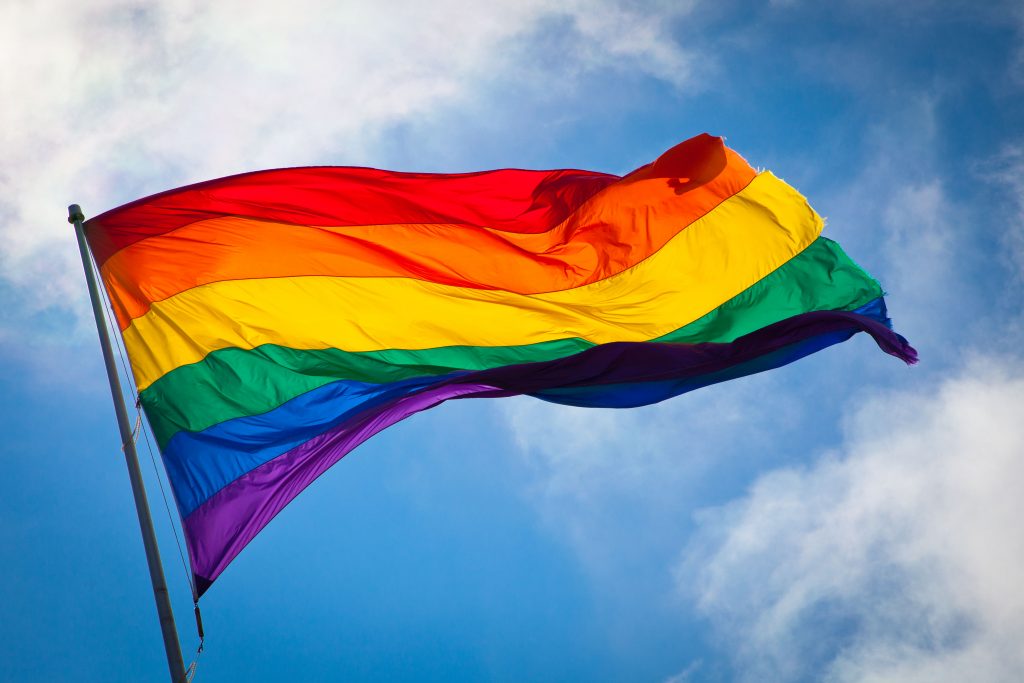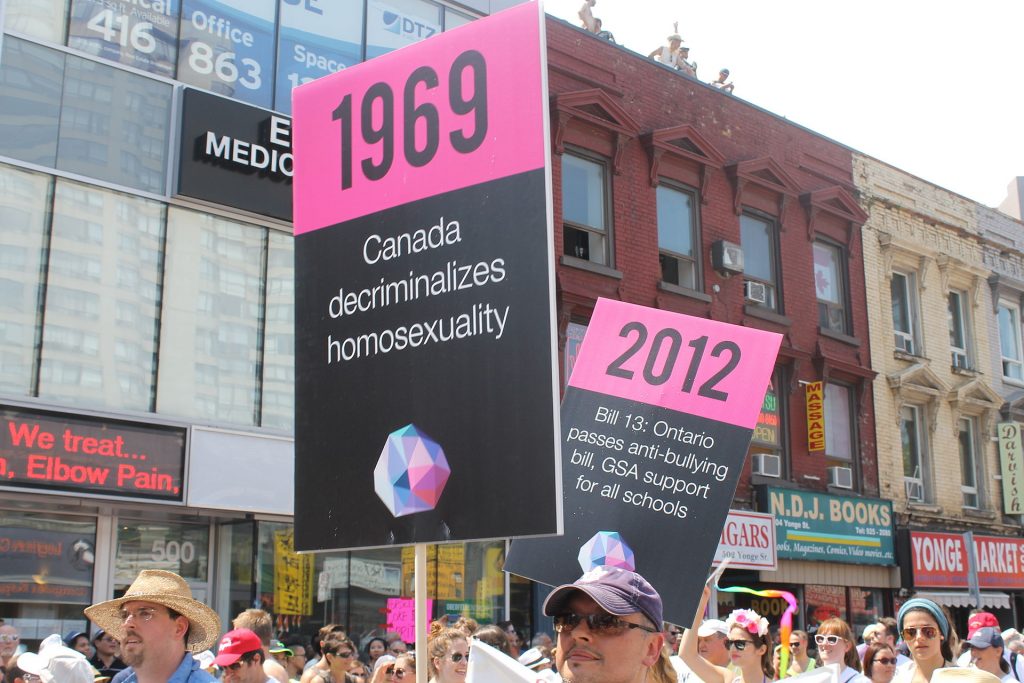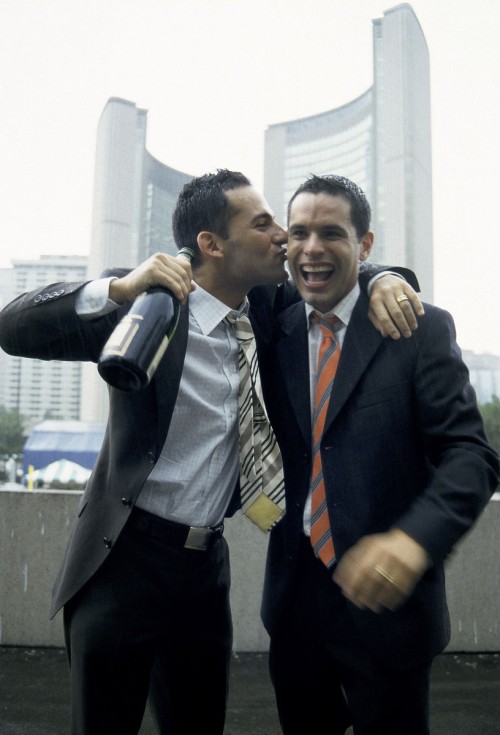The Story of Jim Egan

At one time, the word “queer” was an insult. Today, it is a word many people proudly use to describe themselves. The road to pride began with Jim Egan.
Jim was born in Toronto in 1921. As a young man, he began visiting bars quietly known to be gay meeting places. He had to be careful. The police in Toronto often went to these places. They would trick gay men by pretending to be gay, too. Then they would arrest them. The men’s names would be printed in newspapers. They often lost their jobs, their family, and their friends. Landlords would not rent to them. Being gay meant being left out by the world. Jim met a man named Jack in one of those bars. They fell in love. The world seemed like a less lonely place.
Jim loved to read. He noticed queer people were being written about a lot more in the newspapers. But queer people were always talked about as being sick and immoral. This upset Jim. He could not stay silent. So, in 1949, he began writing letters to the newspapers. He protested the way they talked about gay people. He called for equal rights under the law. This was at a time when no one else was speaking up. Over the next 10 years, his letters appeared in many places, including TIME magazine. In 1963, a reporter from Maclean’s magazine wrote a story about Jim. It was the first positive report about queer people by a major Canadian news company. Jim used a fake name to avoid arrest.
Jack was uncomfortable with Jim’s activism. He was worried that one day they might be thrown in jail. So Jim agreed to give up his activism. They moved across the country to Vancouver Island and started a new life.

In 1969, Prime Minister Pierre Trudeau finally got rid of the law that made queer relationships illegal. Trudeau said, “There’s no place for the state in the bedrooms of the nation.” Jim and Jack no longer had to worry about being put in prison.
In the 1980s, AIDS began taking the lives of gay men. Gay men whose partners died of AIDS did not have the same rights as everyone else whose partners were sick or had passed away. Jim returned to queer activism — and this time, Jack was right by his side. They helped run an AIDS organization. They also ran a drop-in group out of their home for queer people.
Jim retired in 1987. The government would not give him and Jack the same amount of money that married men and women get when they retire. Jim and Jack had been together for over 40 years. They took the government to court. It took eight years, but the courts made it illegal to discriminate based on who people are in love with. This was the first time queer people in Canada had human rights.

In 2005, Canada became the fourth country in the world to make same gender marriage legal. Canada became a worldwide leader in queer rights. Just think – it all began with one man who decided to write a letter!
Attributions
Rainbow flag
Rainbow flag breeze by Benson Kua is used under a CC BY-SA 2.0 license.
Activism
IMG_4372 by Stacie DaPonte is used under a CC BY-SA 2.0 license.
Wedding
Wedding chantelois gomez by Mm.toronto is in the public domain.

